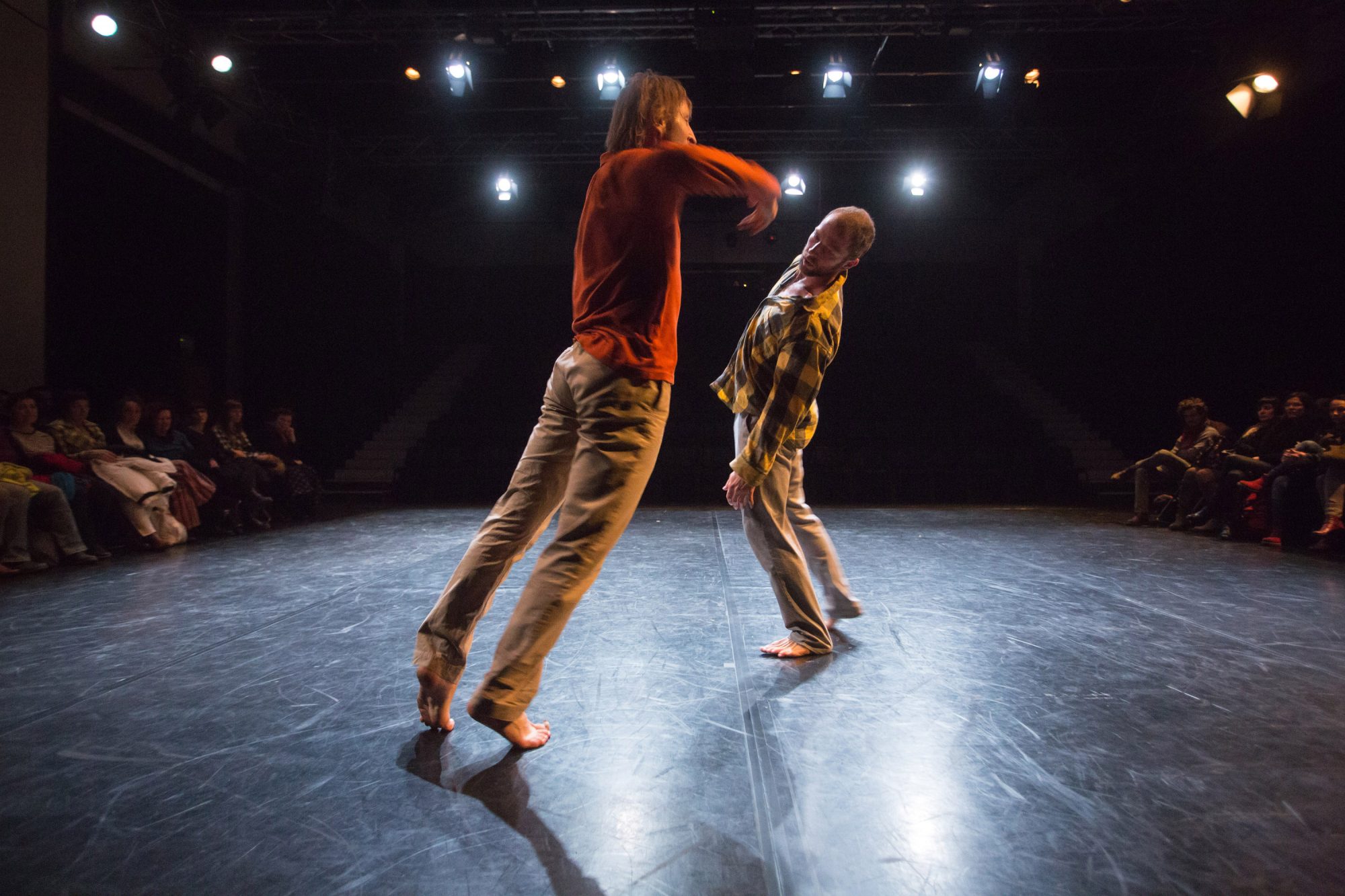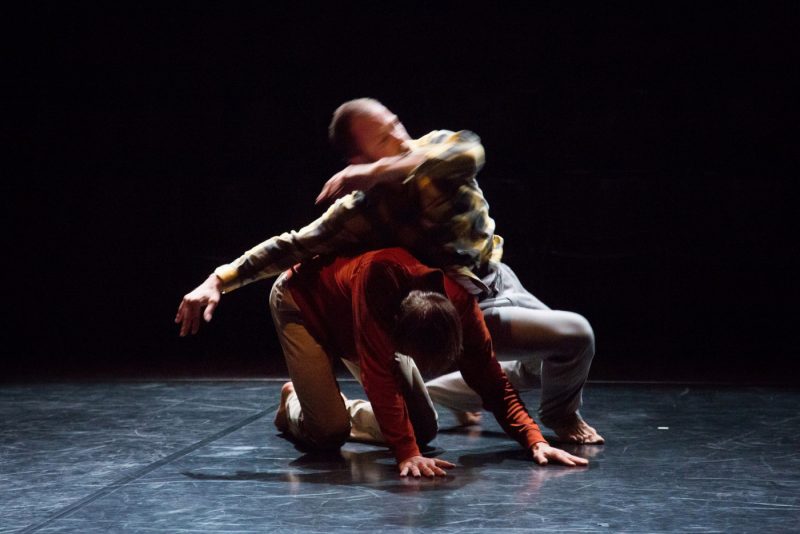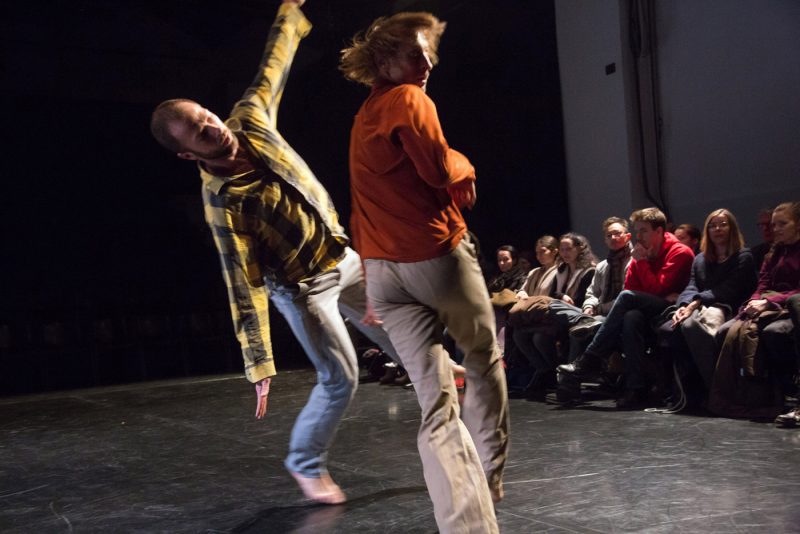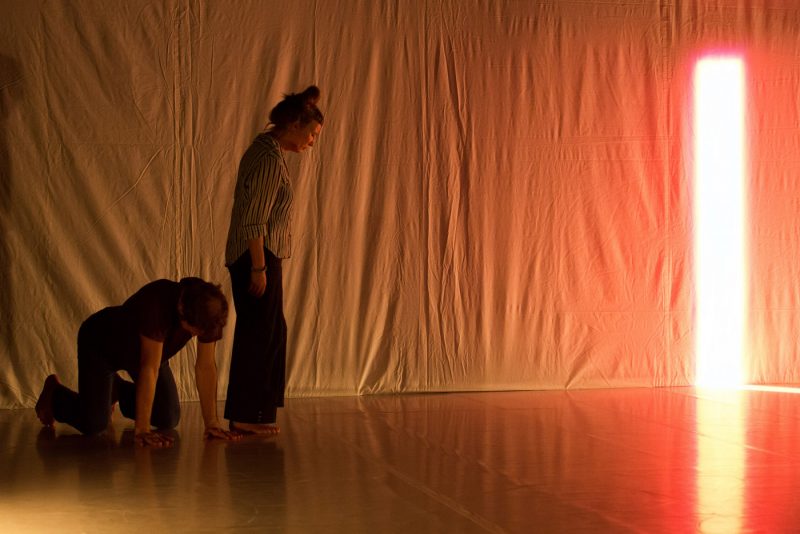Still – research process:
imagined and led by: Jurij Konjar
developed in collaboration with: Franck Beaubois, Catherine Jauniaux, Jaka Šimenc, Martin Kilvady, Daniela Schwartz
title in Slovenian: V iskanju mirovanja (literally: In search of stillness)
Still – performance:
performance and dialogue: Martin Kilvady, Jurij Konjar
lighting design: Jaka Šimenc
running time: 70 minutes
Modul Dance Network partners: Dance Gate Lefkosia (Cyprus), Duncan Dance Center, Athens(Greece), CND Paris (France), Dansehallerne Copenhagen (Denmark), Kino Šiška, Ljubljana (Slovenia), Mercat de les Flors, Barcelona (Spain)
Still was a question, that became a research process and finally, a touring performance.
If I perceive movement as change, and if change never stops, how to ever arrive to a stillness? At that moment in 2013 I’ve been performing my Goldberg Variations for three years. In that improvised performance, stillness was a necessity which would once again bring movement to the attention of the audience. So how to arrive to that place, where change becomes unnecessary? Which, for a while, I can call home?
I located “stillness” as a place where the need for change vanished. This can be a dynamic place – stillness can contain movement. Different from a pause, a stillness is a place between a beginning and an end. For example, it’s in that place after a fall has already started, and before it has been caught. It can be a place between a decision and its consequences.
After the solos Ulysses (2007), Goldberg Variations (2010) and For Juliano Mer-Khamis (2013) I wanted to now work with a partner, or partners. This added complexity to the question. For if one is improvising, how does one realise a common arrival have arrived together, to the same place? How long does it last, before it breaks appart? Can the space of arrival of the two remain elastic, and keep evolving, while maintaining a center? Can these spaces, as they follow each other, become chapters, and build a story, as the dialogue continues? Here, after the Goldberg Variations’ way of improvising (not knowing what I’m doing before it happens) and For Juliano Mer-Khamis way of improvising (between the soup, the story and the movement unraveling, giving into the impossibility of controlling it all), I began flirting with instant composition.
In Still, through research I was going to build tools and know-how for any two artists to improvise a performance together – an open-source proposal of a duet. Coincidence will have it, that I was invited to join a network called Modul Dance, for a period of two years. It allowed me to setup a series of about two-week residencies with different artists, and in different countries.
With Franck Beaubois we focused mainly on something we called instant following, and the nicest performance we did was in the church square for the pigeons and the passers-by.
We did the next three residencies with Catherine Jauniaux, exploring the interaction of voice and the body. For the last of these three residencies, Jaka Šimenc joined us with light design, and the duet became a trio. (The work with light we established then also set the ground for the light-movement relationship in the Monday at eight performance, which came to be in 2018.) We showed the results of our work at Kino Šiška in September 2014, in what I insisted was not a performance, though it probably was anyway. The performance took the form of doing – addressing the audience – and doing again – a structure which remained with the piece until the premiere and beyond, while the one-sided address was replaced by a conversation between protagonists. This was the text written for the audience address at Kino Šiška.
The trio residency was followed by working on a duet again with Daniela Schwartz, focusing on improvising through touch.
The process came back to an open dance duet when working with Martin Kilvady in the last residency, as well as the showings and performances that followed. At this stage, and with an important contribution from Martin, repetition and copying of form were de-stigmatised and they became a very useful tool for our communication on stage. The function of humour in a performance was discussed at length. Talking about the dance that just happened, for the audience that just saw it, became the 2nd-part of a 3-part performance. The ways of talking were treated and rehearsed with the same detail as the dancing that was the subject of conversation.
After try-outs with Dave Holland and Beethoven, Scarlatti’s Sonatas played, by Ivo Pogorelich, crystallized as a good sparing partner, and yet not too suggestive. The search for the right music, and establishing a relationship with it, is also an arch I can follow from the Goldberg Variations, through Still, and to Monday at Eight performances. It remains a fruit-bearing question.
There were two showings of Still with Martin Kilvady in 2013 at the Salmon festival, Mercat de les Flors.
The premiere of the performance was in the summer of 2014, in the circus tent at the Deltebre Dansa festival.
More whole-performance videos are available here
Still workshops description is here
An address to the audience as part of a Still non-performance here
External links:
an interview on the process of Still, by Nika Arhar, MMC












